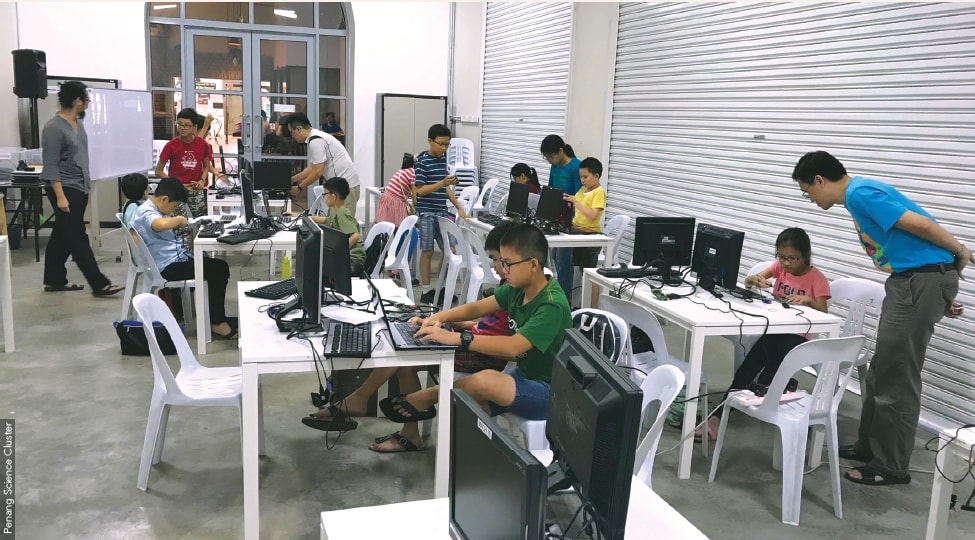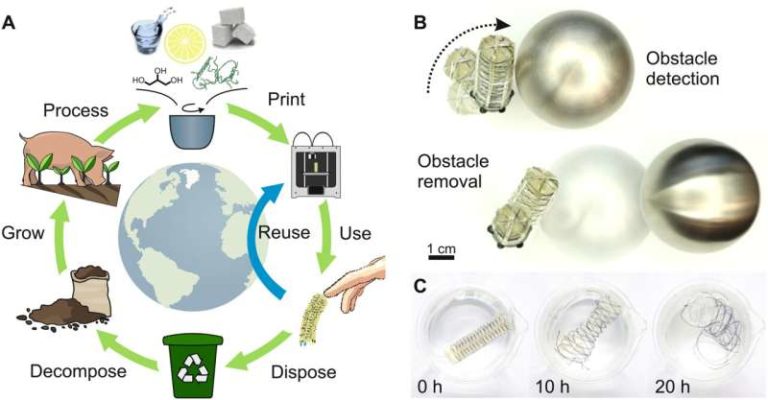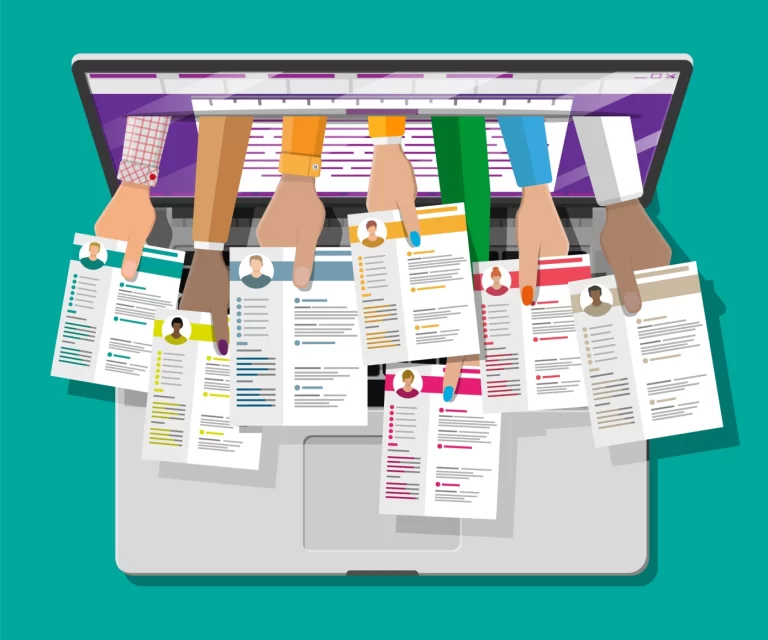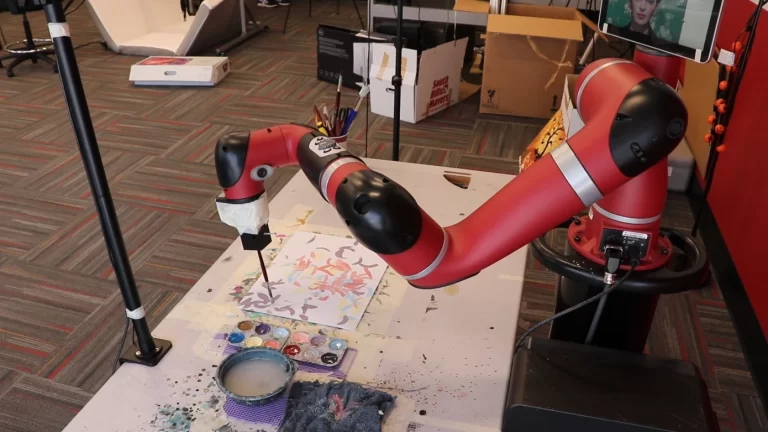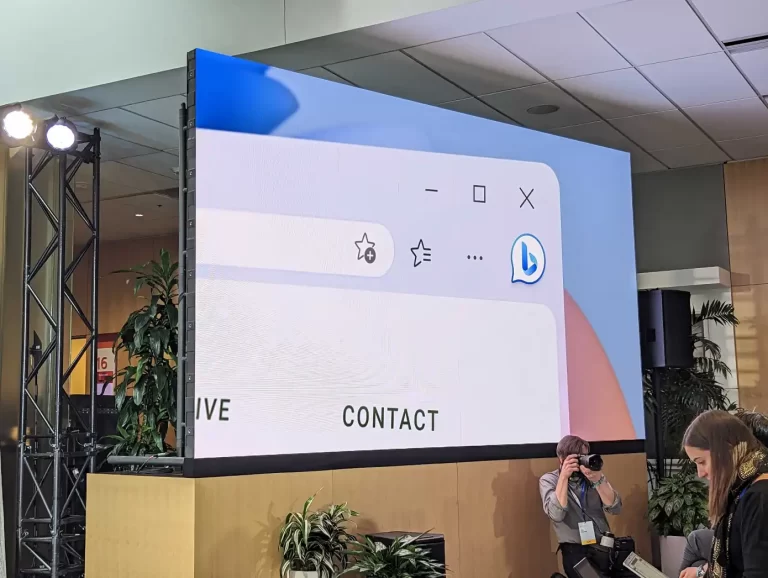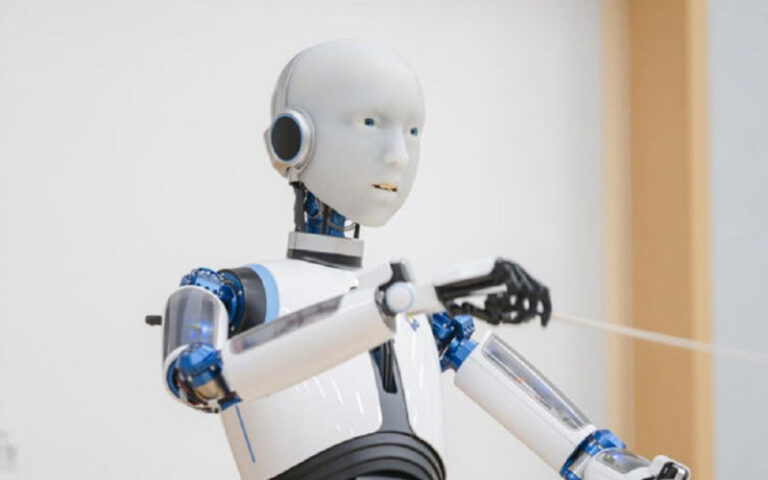Teaching Children to Code
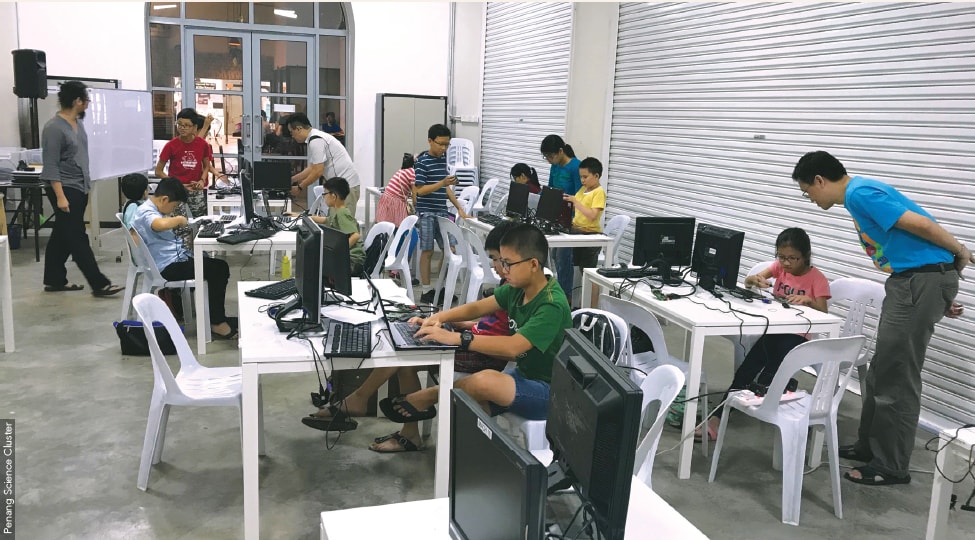
[ Article was extracted from Penang Monthly website (written by Emilia Ismail on June 2018) ]
Computer coding teaches kids to think outside the box, work collaboratively and reason systematically. It is a skill for the future.
Are we shifting our focus from teaching children how to write, to teaching them how to code?
“Since technology now dominates our lives learning basic computer programming is an essential skill for grown-ups and children alike,” says Aimy Lee, operations manager of Penang Science Cluster.
Established in 2009, the Penang Science Cluster aims to spark interest in students on science and technology by providing workshops and functional spaces to showcase innovations by students and makers. Penang Science Cluster has a fully equipped Makerspace providing mechanical tools and machines, and electronic instruments and hardware for students, makers and budding entrepreneurs to build and test prototypes.
The Cluster also has engagement programmes with schools to develop Science, Technology, Education and Mathematics (STEM) learning.
“Twenty years ago, typing and computer literacy may not have been as prevalent, but today, it is a necessary part of life. Fast forward 20 years into the future, coding may follow a similar path. Children today will in 20 years’ time require these skills to thrive and survive the challenges awaiting them, so yes, there should be an emphasis on coding.”
Coding for All
Although coding is now seen as a fundamental skill alongside mathematics and reading, children do not get the opportunity to learn it because it is rarely taught in school.
Working together with Penang Science Cluster, the Penang state government launched the Coding For All initiative in April this year and will be investing RM6mil over the next three years to develop coding skills in young students.
The programme will provide training to over 400 teachers in Penang on Scratch, Python and other computer science subjects. Hardware and course materials will also be provided to over 100 schools in Penang for students to learn line coding. A software competition for students will gauge their acquired skills.
For the marginalised, such as students from various orphanages, free coding workshops will also be provided.
“The most important thing any responsible government should do is to prepare our students well for the future. We must equip our students with critical thinking skills so that they are able to think innovatively. We must be a centre of excellence for science and technology. STEM teaching is the way forward,” says then chief minister Lim Guan Eng when he launched the initiative at the Penang Science Cafe.
“We must also equip them with relevant technical skills, and one of the most important technical skills is the ability to communicate with computers – to analyse data sets, draw insights, create solutions using computers. To do all this, our students must learn to code,” says Lim.
Overcoming Barriers
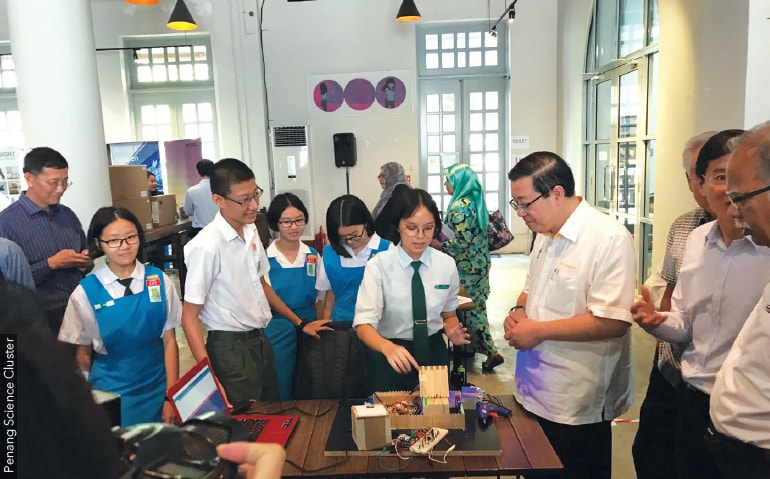
Although societies have become wealthier and more gender equal in some ways, women are nevertheless less likely to obtain degrees in STEM, according to new research. Researchers call this a “gender-equality paradox”. It was found that, throughout the world, boys’ academic strengths tend to be in science or mathematics, while girls’ strengths are in reading. Students who have personal strengths in science or mathematics are more likely to enter STEM fields, whereas students with reading as a personal strength are more likely to enter non-STEM fields.1
“Women remain largely underrepresented in these fields. That’s a fact. To overcome the gender gap, Penang Science Cluster invites young girls to join our workshops at the Penang Science Cafe. We envision the Science Cafe to be a series of science-based community centres promoting the learning of STEM subjects in a fun and innovative way, allowing young girls to gain more confidence and sparking their interest to pursue STEM education,” says Lee.
The Penang Science Cafe, an initiative by the Penang state government and supported by the Penang Science Cluster, is a social collaborative space for the building of a community of science and serves as a catalyst to engage and connect innovative people.
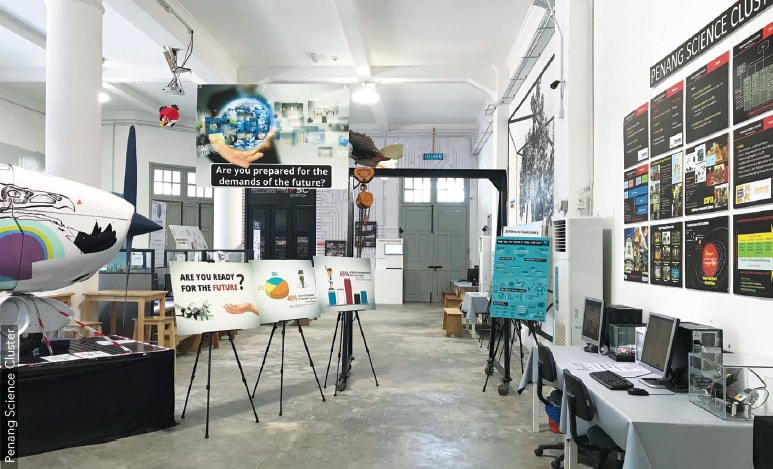
There is also the language barrier that Penang Science Cluster struggles with. “English is the common language used in most readily available STEM-related content. This poses a challenge to students who are not proficient in English. Students may appear to be uninterested in STEM but it may be because they do not understand the language it is being conveyed in. Due to the inability to capture the content, their confidence takes a hit and their interest in the subject wanes,” Lee says.
To address this, parents must play an active role in improving the English proficiency of their children, but for now, Penang Science Cluster uses practical hands-on activities as a hook, in the hope that this hook will drive students to overcome that language barrier at their own pace. “Removing the language barrier helps make STEM subjects understandable and fun for students. But the initiative to overcome the language barrier must start at home,” says Lee.
1www.futurity.org/women-stem-grads-genderequality-1681122.
Emilia Ismail is a freelance writer who has a love-hate relationship with the weighing scale.

